Shortly after pulling away from the pier at Longyearbyen, the main town on the Arctic archipelago of Svalbard, Norway, we saw our first sea ice. Three milky dots moving in the stillness proved to be a mother polar bear and two cubs. But that was the last significant sea ice we were to encounter as we continued north, halfway between Norway and the North Pole.
I had come to the Arctic to learn what the people who live and work there think about the talk of geopolitics—land-grabs, hidden oil wealth, and strategic shipping lanes—now that global warming is opening the region. I wanted to see what the threats really looked like on the ground. And, of course, I hoped to see the Arctic ice sheet, the frozen top of the planet that I had dreamt of setting foot on since I was a child.
What I discovered surprised me. As we sailed north over a week last June, there was no sea ice in sight. And rather than signs of international maneuvering or preparations for oil drilling, I encountered a sort of stunned silence among the people who have long lived in the "high north" and are still coming to terms with the region's rapid, climate-induced changes. Everyone I spoke to was far more concerned about the fragility of the region's wildlife than any competing national interests. The Inuit, who call the circumpolar Arctic their homeland, are concerned about the peril to their distinct culture and way of life.
In June 1818, the ill-fated polar explorer, Sir John Franklin, ventured north from Svalbard, the last bit of Europe before the pole. He was on his first failed expedition to find an Arctic sea route between the Atlantic and Pacific oceans. The ship's halyards were fat with ice, and soon the sea was thick with it, too—much of it many years old, stretching beyond the northern horizon.
"Where Franklin found ice I found nothing but open water"
I set sail on the same route 200 years after his voyage with a group of artists in a square-rigged barquentine not very different from his ship, the Trent. But where Franklin found ice I found nothing but open water, blue and flat as far as the eye could see. The ice cover around Svalbard had dropped 40 percent below a four-decade summer average, and our captain, a Dutchman, reported that the frozen edge of the Earth's ice cap was 100 miles farther north than we had time to sail.
Everyone knows the Arctic is melting. But the stark reality of an ice-free sea—well beyond where Franklin managed to navigate two centuries earlier—was startling nonetheless. The volume of Arctic sea ice, both in thickness and extent, has decreased more than 70 percent since the late 1970s.
The polar ice cap at the end of the summer melt season, roughly the size of the contiguous United States 40 years ago, has shrunk to an irregular semicircle covering about two-thirds of that area today. It hugs Greenland and Canada's Arctic shore, but in August, open water appeared on Greenland's northern coast for the first time on record as the ice there unexpectedly broke up—an ominous development. Some scientists predict that there will be no summer ice in little more than a decade and that the Arctic Ocean will freeze only in winter.
The vanishing ice sheet opens the top of the world to shipping, fishing, and oil and gas drilling, making it strategically important for the countries that surround it. Many people, beginning with explorer Vilhjalmur Stefansson in the 1920s, have argued that the Arctic Ocean will eventually be like a new Mediterranean Sea, ringed by rival nations. They predict an inevitable international clash of interests there—a sort of postmodern replay of the Punic wars between Carthage and Rome.
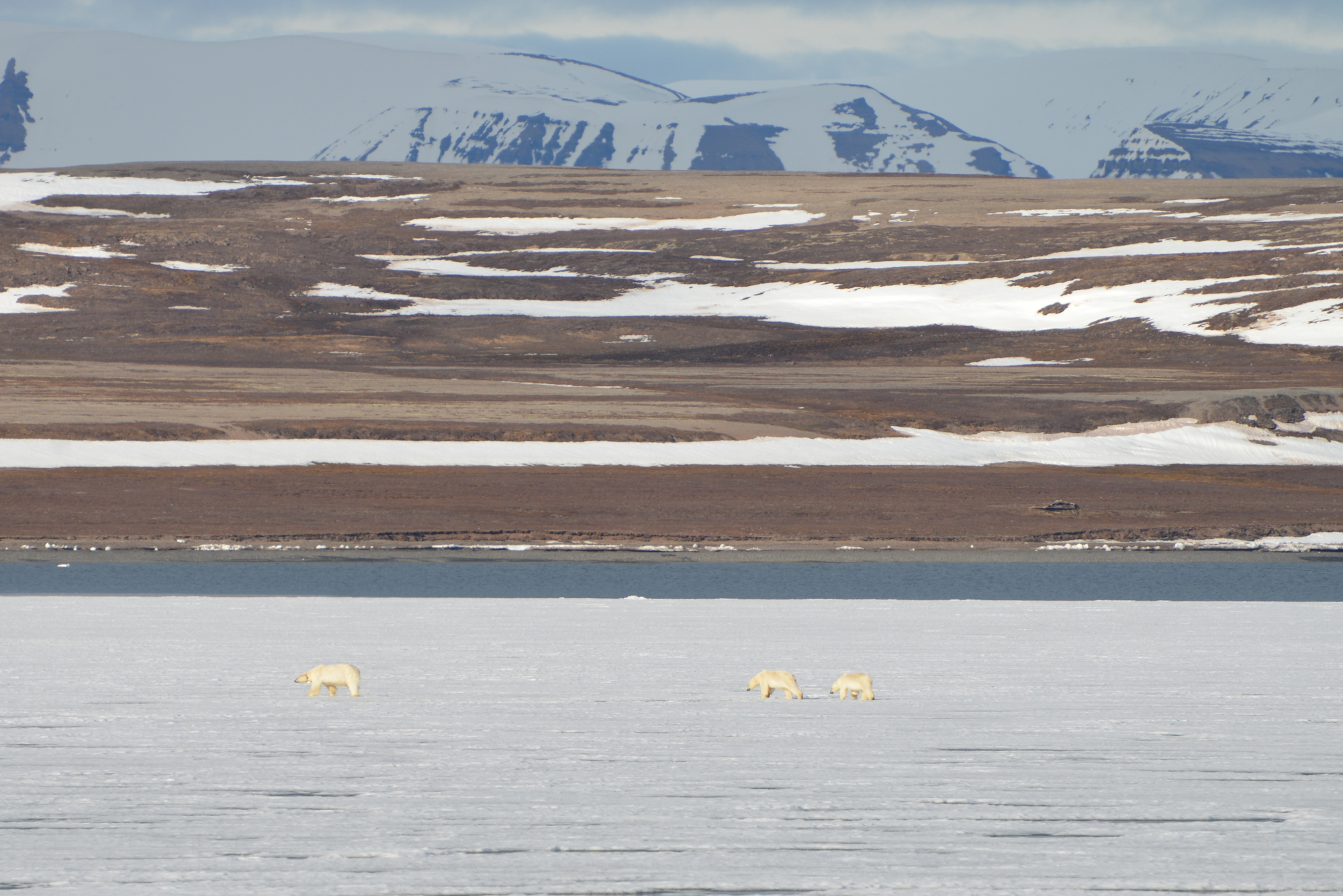
In May, U.S. Secretary of State Mike Pompeo shocked everyone by claiming at a ministerial meeting of the Arctic Council that "the region has become an arena for power and for competition."
"This is America's moment to stand up as an Arctic nation and for the Arctic's future," he declared. "The Arctic is at the forefront of opportunity and abundance."
The international council coordinates policies among the eight Arctic nations, plus representatives of the region's Indigenous peoples, and is focused on protecting the Arctic's fragile environment. The U.S. has largely ignored the Arctic until now.
The sun rotated endlessly in the bright sky. Vision was sharp and clear in the dry, dustless air. Distance and dimension were difficult to judge because objects that would normally be faint or fuzzy from the scattering of light appeared disorientingly crisp.
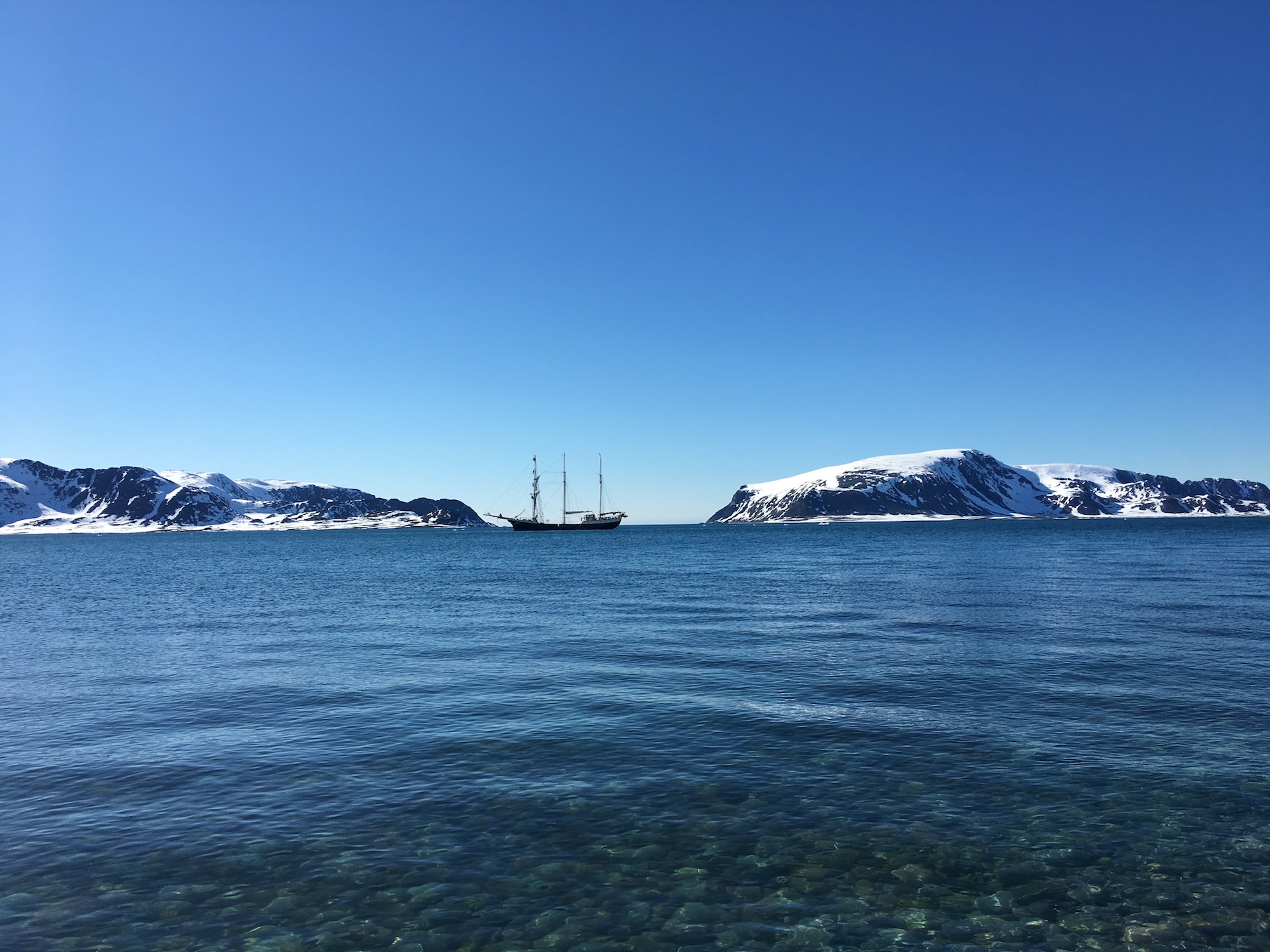
Disorienting, too, was the sense of quiet concern I encountered among all of the people I met. They sniffed or smiled or simply shrugged when talk turned to geopolitics. Russians and Norwegians, Chinese and Canadians mingled in the handful of settlements on the archipelago. There was no sense of international intrigue even in Barentsburg, a Soviet-era coal mining outpost that exists now largely as a political relic, hearkening to the days when the Soviet Union had grander ambitions there. Instead, there was dread of what a warming planet might mean.
"No one thinks about politics here"
Russia is the most Arctic of countries, controlling 40 percent of the land area above the Arctic Circle and home to three-quarters of the polar region's population. It has recently been building up Arctic military bases that had been closed or neglected since the end of the Soviet era.
In response, conservative pundits and military hawks in the West have pushed the notion that the Arctic is becoming the theater of a truly cold Cold War. "Russia lists Norway's Svalbard policy as potential risk of war," screamed a headline in the Barents Observer over a year ago. "As Arctic ice melts, territorial disputes are hotting up," warned Britain's Independent last year.
American politicians and appointees, led by Senator Dan Sullivan (R-Alaska) and former defense secretary James Mattis, have pushed for increased U.S. military spending in the high North to counter the Russian buildup. A map of Russian Arctic military installations, produced by Sen. Sullivan's office, is often used to warn of what Mattis calls Moscow's "aggressive steps."
In his speech to the Arctic Council, Pompeo, too, excoriated Russia and China for "aggressive behavior," saying Russia in particular was "leaving snow prints in the form of army boots" in the Arctic.
But much of what Russia is building is an extensive network of search-and-rescue bases to serve shipping along the Northern Sea Route, an increasingly viable freight passage as the climate warms. Canada's senior Arctic official, Alison LeClaire, called that a "legitimate state activity" and noted that Russia's Arctic military presence is still far below the level of the Soviet Union during the Cold War.
"What we see is a government that has a growing source of wealth on its northern periphery to protect," she said in a phone call. "Our assessment is that there is no military threat there."
Even Julia Gourley, a U.S. State Department official and the U.S. representative at the Arctic Council, thinks so. "There's really no evidence of aggressive intent by Russia, despite the reinvigoration of its military assets in the region," she told Congress in 2016.
"No one thinks about politics here," said Sergey Anenkov, a miner in the Russian coal mining outpost of Barentsburg, as he served me coffee and poppyseed cakes in the one room he calls home. Most of the miners in the Soviet-era town are Ukrainian, he added, but even during Russia's invasion of Ukraine there was no tension there. Instead, Anenkov said, he and his friends feel they are witnesses to a disappearing world.
At Barentsburg's lonely Russian consulate—the most northern diplomatic mission in the world—the attaché dismissed suggestions that his presence signaled anything more than a necessary passport service for Russians living in the town. Tourism and science were the settlement's future, he told me.
The town's grim brick buildings have recently been covered with colorful cladding. The largest and newest structure in town is a blue entertainment center where workers sing and dance for the amusement of the few tourists who visit each day. A small climate research center, meanwhile, has opened at the far end of town. "There's no intrigue here," Alexandr Novikov, the head of the research center, said with a smile. "We cooperate with many countries here, including the U.S."
Fueling talk of potential conflict has been the hopes of the five Arctic-facing nations—the U.S., Canada, Denmark, Norway, and Russia—to extend their territory as the ice recedes. A United Nations convention states that it will grant undersea sovereignty to any country that can prove its continental shelf extends beyond the 200-nautical-mile margin currently recognized under international law. Russia, Canada, and Denmark argue that they are each connected to Lomonosov Ridge, a submerged mountain range that bisects the Arctic Ocean. Their claims, projecting from their respective coastlines, overlap at the pole. Canada submitted 2,100 pages of scientific evidence to the UN to support its claim in May.
If this contested "ownership" of the pole has not transformed the Arctic into a Tom Clancy novel, that is because there is a laborious UN process, based on hard science and explicit rules, to decide which of the competing claims are valid. All of the countries are following that process scrupulously. Delimitation will depend on diplomacy, not bombs or blockades.
"There is no potential for conflict here," Russia's foreign minister, Sergey Lavrov, told other Arctic nations at a meeting in Fairbanks, Alaska, last year. "International law is reliably protecting the national interests of the Arctic states."
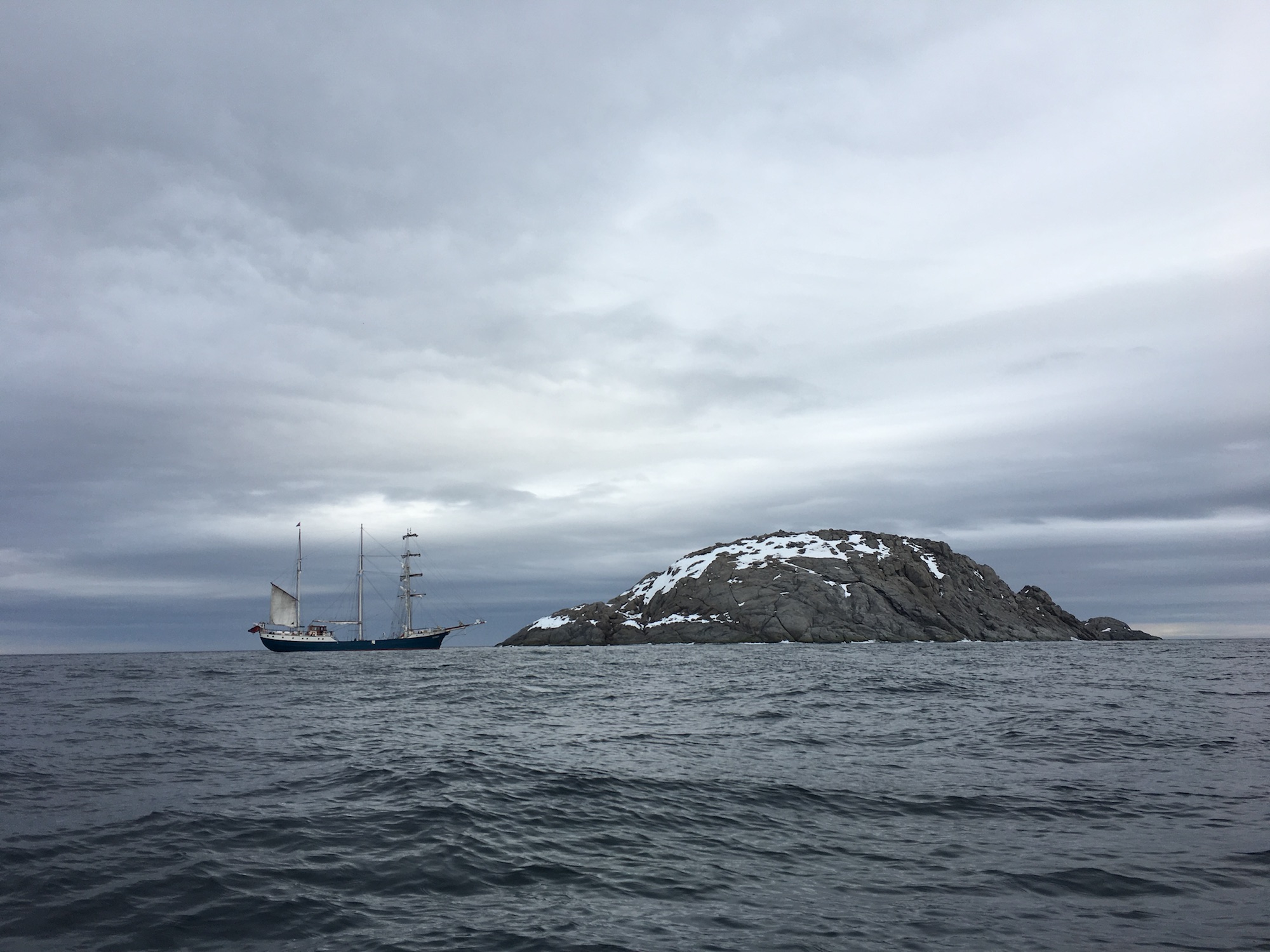
There was no ice when we arrived at Rossøya, or Ross Island, the last speck of land between us and the North Pole. The rock, like the hump of a whale emerging from the sea, was barren but for lichen and scurvy grass fed by the droppings of sea birds. It is named for James Clark Ross, who battled the ice there on his own failed bid for the North Pole with fellow Englishman, William Parry, in 1827. He later searched fruitlessly for Franklin's lost expedition in the frozen waterways of Canada's Northwest Passage.
It is what may lie beneath the uncharted waters beyond the island that many people cite as the reason a nation might believe the Arctic is worth fighting for: hidden hydrocarbons. That is based primarily on a decade-old U.S. Geological Survey report that estimated 13 percent of the world's undiscovered oil and 30 percent of its undiscovered natural gas lies in the Arctic. Novikov, the Russian scientist in Barentsburg, laughed when asked about estimate. "That's their number, not ours," he said.
But even if those estimates are correct—and they have not been borne out by any exploration—the report places most of the estimated reserves well within the recognized continental shelves of the Arctic coastal countries.
The otherwise unclaimed seabed under the great white Arctic of people's imagination, according to the U.S. study, is largely devoid of oil. And given the difficulty of working in the northern climate, deep sea Arctic oil and gas exploration would be a money-losing proposition at current energy prices even if a bonanza of hydrocarbons turns out to be true. The most promising offshore Arctic oilfield is beneath the U.S. continental shelf off the coast of Alaska. But there are no oil executives setting up shop to prospect in the unclaimed ocean.
In any case, extracting oil and gas in the Arctic will likely continue to be a cooperative, transnational affair. Russia derives 20 percent of its gross domestic product from the Arctic, primarily from onshore oil and gas wells. But when it sought to tap new reserves in the Arctic, it turned to U.S. energy giant ExxonMobil. Sanctions following Russia's annexation of Crimea killed that deal, but the country soon found a willing partner in China.
China's interest in the Arctic is not much different than Sir Franklin's: an Arctic route that cuts the distance between China and Europe by as much as 40 percent. That could save China more than $100 billion a year, according to China's Ministry of Natural Resources. Chinese cargo ships already make summer crossings of the Arctic, mostly along the Russian coast, and the country is likely to dominate Arctic sea routes as they open up further. By midcentury, some researchers predict, Chinese ships will be making regular trips directly over the pole and through the waters I sailed west of Svalbard.
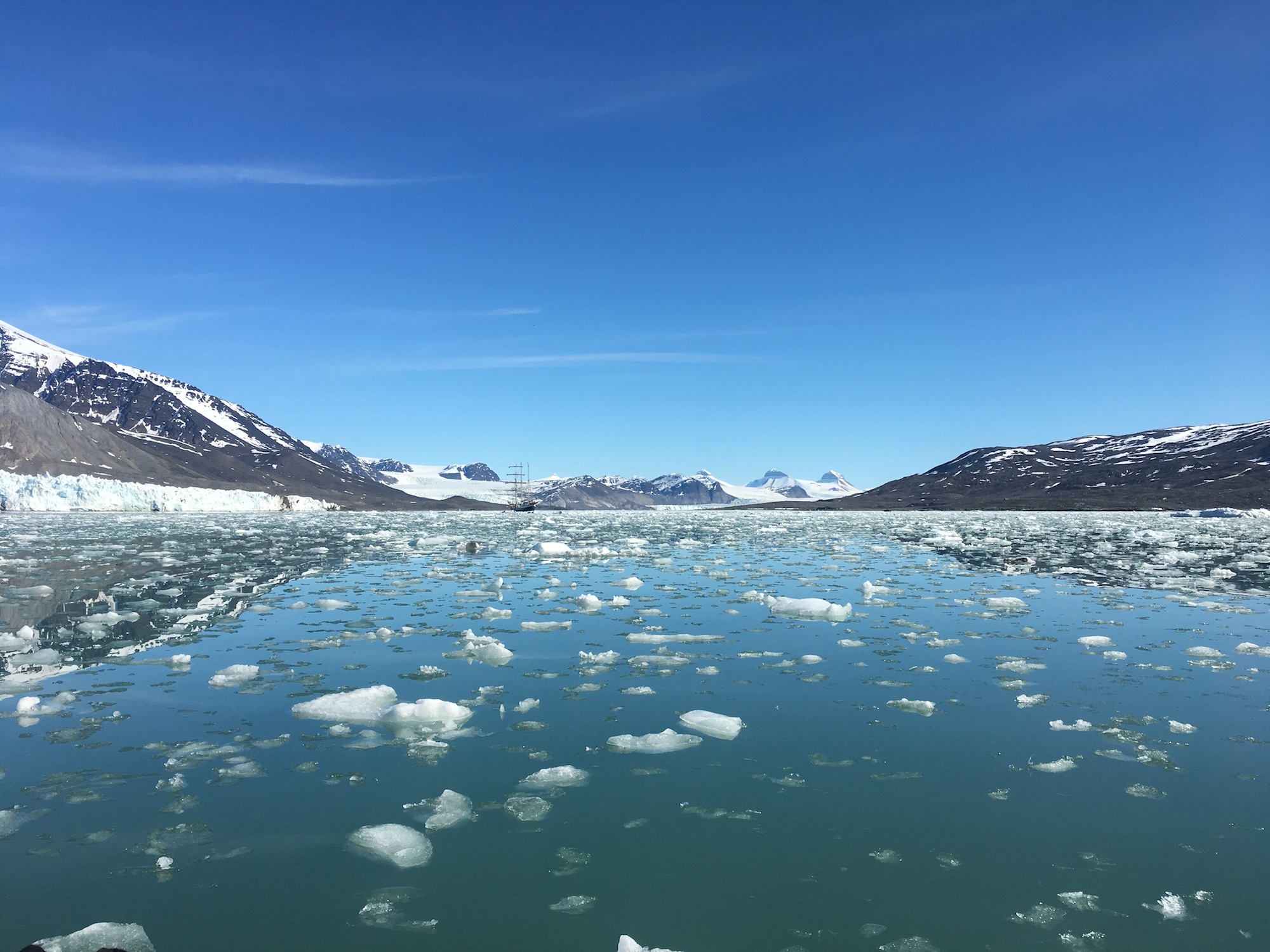
As a result, China has positioned itself as a "near-Arctic" country and is spending billions— mostly on a fleet of Arctic icebreakers—to claim a place in the region despite having no territory within 1,000 miles of the Arctic Circle. It has invested heavily in a liquefied natural gas project on Russia's Yamal peninsula and has promised to build a railway and deep-sea port near Russia's Arctic port city Arkhangelsk.
China is also looking at financing oil and gas exploration in Greenland, where the island's small Indigenous population is poised to declare independence from Denmark once energy prices recover enough to make the island self-sufficient. If financed by China, Greenland could become a Chinese proxy, giving it access to Arctic resources.
But no one expects China's ambitions for Arctic shipping or Arctic oil drilling to trigger a conflict. One Chinese Arctic expert, who asked not to be identified because she is not authorized to speak to the press, emphasized that China is working through established international agencies to expand its Arctic presence.
At Ny Alesund, the northernmost continuously occupied community in the world, China has the largest research team of the 10 countries who have sent scientists there to study various aspects of global warming. Two marble lions distinguish their red wooden building, dubbed the Arctic Yellow River Station, from the other widely spaced utilitarian structures that make up the town.
We stopped on our way back down the archipelago. While the Chinese were "in meetings," I spoke to Kim Holmen, a Swede with a long beard worthy of Gandalf, who is the Norwegian Polar Institute's international director there. He bikes through the village during the summer months, wearing a sparkly knit cap with an oversized pink pompom. "The Arctic is one of the most peaceful oceans in the whole world," he told me, standing on a treeless slope above the sparse settlement. "There are very few real signs of emerging conflict in this part of the world."
But look closely and you can see the beginnings of change. The bar at Ny Alesund opens twice a week—once on Saturdays for the scientists, and, recently, once on Thursdays when a cruise ship brings tourists to wander the village, buy souvenirs, and send postcards from the world's most northern post office.
"The real conflict looming in the Arctic is what it has always been: nature against man"
As the world's largest source of outbound tourism, China is likely to dominate Arctic tourism, too. Already Arctic countries are wary of the numbers that could involve. Local opposition stopped Chinese entrepreneur Huang Nubo's plans to build a luxury resort in a remote part of Iceland several years ago as did local opposition to his plans to buy land on Svalbard. In 2014, he finally succeeded in buying land in northern Norway but has yet to develop it.
Upon my return to Longyearbyen, I came across a group of wealthy Chinese tourists in bright yellow parkas provided by the Arctic tour company, Quark Expeditions. They had recently been to the North Pole aboard Russia's nuclear icebreaker, 50 Years of Victory. The state-owned vessel is rented out as a luxury polar cruise ship, complete with champagne and caviar. One middle-aged woman boasted to me that she had visited both poles.
Our three-masted schooner at Longyearbyen's small port, meanwhile, was dwarfed by a massive German cruise ship whose sides, covered with stateroom balconies, looked like a Miami condominium tower. Droves of people streamed from the ship, one of dozens that visit the tiny port each summer. Some of them make stops at Ny Alesund and the pristine fjords once frequented only by rugged explorers or lonely trappers.
Tourists already represent the largest human presence in the Arctic and the numbers delivered by cruise ships, mostly from Europe and the United States, are set to explode. That has scientists, politicians, and Indigenous people alarmed. "Long-term planning processes need to be put in place for the Arctic Ocean—immigration, tourism, etc.—and that should involve Arctic peoples directly," said Cindy Dickson, executive director of the Arctic Athabaskan Council, which represents American and Canadian indigenous people at the Arctic Council.
Dalee Sambo Dorough, chairman of the Inuit Circumpolar Council, said by email that "our rights and responsibilities to future generations must be taken into account within every dialogue, debate, and decision."
The head of a logistics company in Longyearbyen had more pedestrian concerns. "We like the business," he said, "but we need more infrastructure."
The average cruise ship generates as much as 200,000 gallons of sewage and a million gallons of wastewater each week, according to a 2008 U.S. government study, as well as 25,000 gallons or more of oily bilge water from engines and machinery.
Yet there are currently no restrictions on the release of treated wastewater in the Arctic and few ports in the far north have the infrastructure to adequately dispose of bilge water, sewage, or solid waste. Already, the remote islands and sandbars we visited were littered with bright green fishing nets and orange floats lost by trawlers. Objects degrade at a glacial pace in the frozen north.
Scientists worry that the increasing human presence will exacerbate the problems wildlife are already facing due to climate change.
While my fellow passengers and I were ashore, exploring the stark, black and white landscape, we spotted a polar bear on a small island a couple of hundred yards away. We gathered at a narrow inlet, crowded together by its steep sides, to watch as the predator meandered among the stones. Then, suddenly, it slipped into the water and started swimming our way.
Polar bears are surprisingly fast swimmers, thanks to their webbed, paddle-like paws. Before long the bear had closed the distance between us by half, sparking a blizzard of activity among the group and our handful of rifle-toting guards. Confrontation with bears can easily lead to death and no one wants to kill a bear, only a few thousand of which survive in the Svalbard region. We radioed for a Zodiac, the sturdy black-rubber dinghies that are the workhorses of the Arctic, and before long we were giving the bear a wide berth in the sea.
Not long after our encounter, a bear was killed on Svalbard after attacking a cruise ship guard. Such incidents will be increasingly common as tourist traffic grows. "Tourism is a form of pressure in this environment and the pressure of tourism is growing," said Holmen.
The real conflict looming in the Arctic, he told me, is not between Russians and Americans, or Canadians and Chinese; it is what it has always been: nature against man. But unlike in Sir Franklin's day, man will now prevail. The melting ice will open the region to increasing human presence and, regardless of whether politicians in faraway capitals vie for control of the Arctic in one way or another, that human presence will have an unalterable impact on the wildlife there. Pristine habitats will be polluted, populations of plants and animals will disappear. Man will eventually spoil what has gone unspoiled because it was locked behind a barrier of ice. Geopolitics is a sideshow.
I had come to the Arctic to find what most threatens the Arctic and discovered that the threat is me.
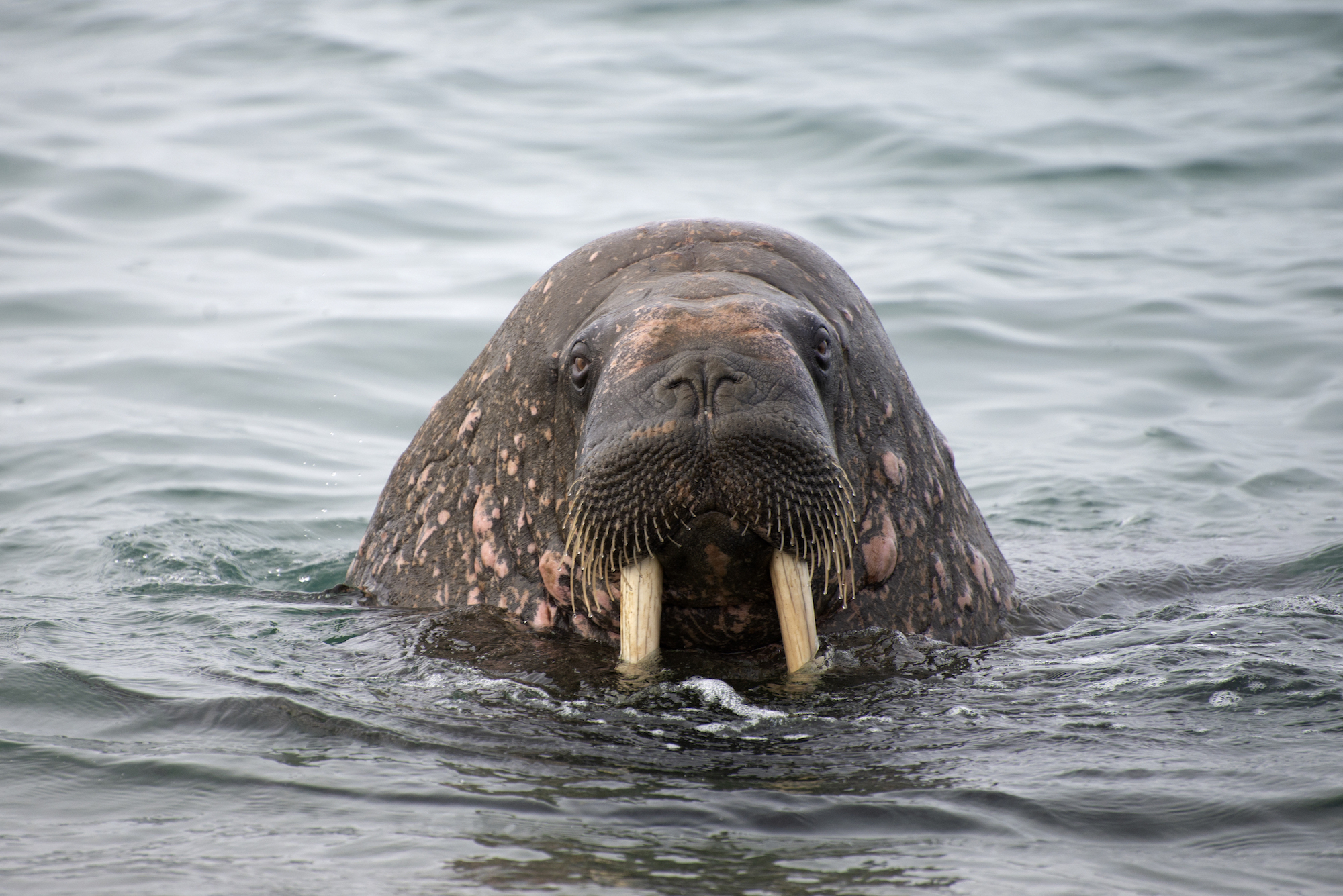
On a lonely gravel sandbar about 20 of my fellow travelers and I disembarked from two black rubber dinghies, hoping to see walruses resting there. Within moments, one of the massive ancient animals surfaced and dragged itself to the shore, raising itself on its flippers to stare at us staring silently back, 30 feet away. Its brown skin was speckled with pink contusions and, its massive tusks ridged with age. Its eyes were bloodshot but eerily aware. To see such a sentient being in the wild, far from civilization, is to feel at some primal level that Earth is bigger, older, more complex, and more powerful than man or anything he has wrought upon it. It is to face innocence and, by reflection, to face our own sin.
We stared at each other for 15 or 20 minutes before the walrus, with a snort of hot, steamy breath, rolled back into the frigid sea.
from VICE https://ift.tt/2M9wBTR
via cheap web hosting
No comments:
Post a Comment